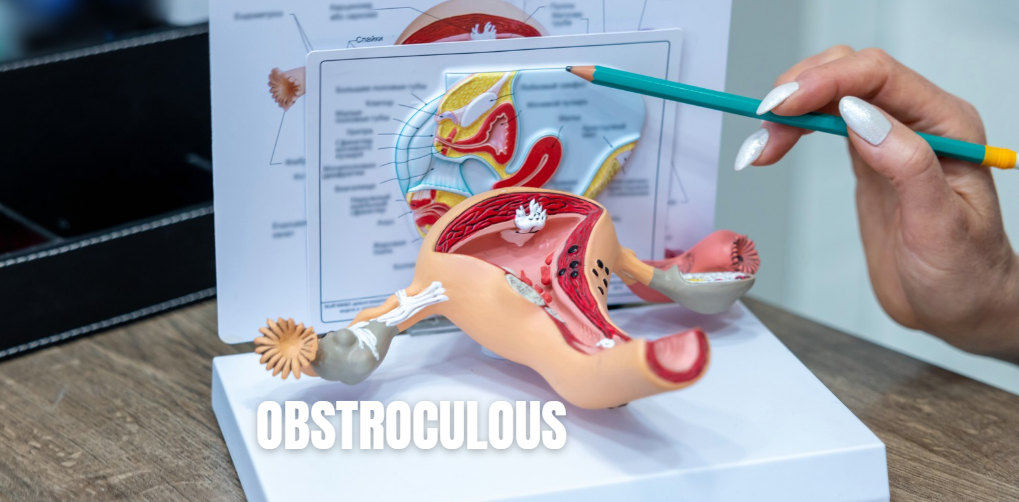In the intricate web of human interactions, certain behaviors stand out for their complexity and impact on social dynamics. One such behavior is described by the term obstroculous. This article aims to provide a detailed exploration of obstroculous behavior, offering insights that surpass existing information and optimizing content for better search engine ranking.
By examining its characteristics, causes, implications, and strategies for management, we delve into the depths of obstroculous behavior to present a thorough understanding for our readers in the USA.
Contents
- 1 Introduction to Obstroculous Behavior
- 2 Defining Obstroculous Behavior
- 3 Historical Context and Origins
- 4 Psychological Perspectives on Obstroculous Behavior
- 5 Common Characteristics of Obstroculous Individuals
- 6 Causes and Triggers of Obstroculous Behavior
- 7 Impact on Personal and Professional Relationships
- 8 Strategies for Managing Obstroculous Behavior
- 9 Case Studies and Real-Life Examples
- 10 Obstroculous Behavior in Different Contexts
- 11 FAQs about Obstroculous Behavior
- 12 Conclusion
Introduction to Obstroculous Behavior
Obstroculous behavior is a term that encapsulates actions characterized by stubbornness, defiance, and a general resistance to cooperation. This behavior can manifest in various forms, affecting interpersonal relationships and professional environments alike. Understanding obstroculous behavior requires a multi-faceted approach, exploring psychological, social, and contextual factors.
Defining Obstroculous Behavior
What is Obstroculous Behavior?
Obstroculous behavior refers to a pattern of actions that are persistently stubborn, defiant, and uncooperative. Individuals exhibiting this behavior often resist authority, challenge norms, and create conflict within groups or relationships. The term encompasses a wide range of actions that disrupt harmony and hinder constructive interactions.
Key Elements
- Stubbornness: A steadfast refusal to change one’s position or attitude.
- Defiance: Active resistance against authority or established rules.
- Non-Cooperation: A reluctance or refusal to work collaboratively with others.
Historical Context and Origins
Etymology of Obstroculous
The word obstroculous is believed to be derived from Latin roots, combining “ob-” (against) and “struxi” (to build or arrange), suggesting a disposition towards building resistance or opposition. Although the term is not commonly found in everyday language, it captures a nuanced form of opposition that has been recognized in various cultures and historical contexts.
Evolution of the Concept
Over time, the concept of obstroculous behavior has evolved, influenced by changing social norms and psychological understandings. Historically, such behavior might have been viewed as rebellious or insubordinate, but modern perspectives often seek to understand the underlying causes and motivations.
Psychological Perspectives on Obstroculous Behavior
Theoretical Frameworks
Several psychological theories provide insights into obstroculous behavior:
- Behavioral Psychology: Focuses on observable behaviors and their reinforcement.
- Cognitive Psychology: Examines thought patterns and beliefs that contribute to defiance.
- Psychoanalytic Theory: Considers unconscious motivations and early childhood experiences.
Personality Traits
Certain personality traits are often associated with obstroculous behavior, including:
- Openness to Experience: May lead to questioning norms and authority.
- Conscientiousness: Low levels can contribute to non-cooperative behavior.
- Agreeableness: Low agreeableness often correlates with defiance and stubbornness.
Common Characteristics of Obstroculous Individuals
Behavioral Indicators
Individuals exhibiting obstroculous behavior may display the following characteristics:
- Persistent Argumentation: Frequently engaging in debates and challenges.
- Resistance to Change: Reluctance to adopt new ideas or methods.
- Authority Issues: Difficulty accepting directives from superiors or peers.
Emotional and Cognitive Aspects
- Emotionally Reactive: High levels of frustration or anger when confronted.
- Rigid Thinking: Inflexible thought patterns that resist alternative perspectives.
- Sense of Autonomy: Strong desire for independence and control over decisions.
Causes and Triggers of Obstroculous Behavior
Psychological Causes
Understanding the roots of obstroculous behavior involves examining various psychological factors:
- Early Life Experiences: Traumatic or inconsistent upbringing can foster defiance.
- Attachment Issues: Insecure attachments may lead to mistrust and oppositional behavior.
- Self-Esteem: Low self-esteem can manifest as defiant actions to assert oneself.
Environmental and Situational Triggers
Certain environments and situations can exacerbate obstroculous tendencies:
- Stressful Circumstances: High stress can trigger defensive and defiant behaviors.
- Perceived Injustice: Situations perceived as unfair can provoke resistance.
- Group Dynamics: Presence of authority figures or hierarchical structures can influence behavior.
Impact on Personal and Professional Relationships
Personal Relationships
Obstroculous behavior can strain personal relationships in various ways:
- Conflict and Tension: Persistent defiance creates ongoing conflict and tension.
- Lack of Trust: Reluctance to cooperate undermines trust and mutual respect.
- Emotional Distress: Both parties may experience emotional distress due to constant friction.
Professional Settings
In professional environments, obstroculous behavior can have significant repercussions:
- Team Dynamics: Non-cooperation can disrupt team cohesion and productivity.
- Leadership Challenges: Leaders may struggle to manage obstroculous employees effectively.
- Workplace Culture: A pervasive culture of defiance can hinder organizational growth and morale.
Strategies for Managing Obstroculous Behavior
Psychological Interventions
Addressing obstroculous behavior often requires targeted psychological interventions:
- Cognitive-Behavioral Therapy (CBT): Helps individuals reframe negative thought patterns and develop healthier responses.
- Motivational Interviewing: Engages individuals in a collaborative process to enhance motivation for change.
- Mindfulness Practices: Encourages self-awareness and emotional regulation.
Practical Approaches
In addition to psychological interventions, practical approaches can also be effective:
- Clear Communication: Establishing clear expectations and consequences for behavior.
- Positive Reinforcement: Encouraging cooperative behavior through positive reinforcement.
- Conflict Resolution Skills: Teaching individuals effective conflict resolution techniques.
Case Studies and Real-Life Examples
Case Study 1: Obstroculous Behavior in Adolescents
A 16-year-old high school student consistently defies teachers and refuses to follow classroom rules. Through a combination of CBT and positive reinforcement strategies, the student gradually learns to channel their need for autonomy into constructive activities, improving both their behavior and academic performance.
Case Study 2: Workplace Challenges
A project manager in a tech company struggles with an obstroculous team member who resists collaboration and frequently challenges directives. By implementing regular feedback sessions, clear communication, and opportunities for the team member to take on leadership roles in specific tasks, the manager successfully reduces defiance and improves team dynamics.
Obstroculous Behavior in Different Contexts
In Education
In educational settings, obstroculous behavior can disrupt learning environments and challenge educators. Strategies such as individualized attention, engaging lesson plans, and fostering a supportive classroom culture can mitigate these effects.
In Families
Within families, obstroculous behavior can strain parent-child relationships and sibling interactions. Consistent parenting approaches, open communication, and family counseling can help manage and improve these dynamics.
In Communities
At a community level, obstroculous behavior can affect social cohesion and group initiatives. Community leaders can address this through inclusive decision-making processes, conflict resolution workshops, and fostering a sense of belonging among members.
FAQs about Obstroculous Behavior
What is obstroculous behavior?
Obstroculous behavior refers to actions characterized by stubbornness, defiance, and resistance to cooperation, often resulting in conflict and disruption in various settings.
What causes obstroculous behavior?
Obstroculous behavior can be caused by a combination of psychological factors (such as early life experiences and personality traits) and environmental triggers (such as stress and perceived injustice).
How can obstroculous behavior be managed?
Managing obstroculous behavior involves psychological interventions like cognitive-behavioral therapy and practical approaches such as clear communication, positive reinforcement, and conflict resolution skills.
Can obstroculous behavior be changed?
Yes, with appropriate interventions and support, individuals exhibiting obstroculous behavior can learn to adopt more cooperative and constructive behaviors.
Is obstroculous behavior common?
Obstroculous behavior is relatively common and can be observed in various settings, including personal relationships, educational environments, and professional contexts.
Conclusion
Understanding obstroculous behavior requires a comprehensive approach that considers psychological, social, and contextual factors. By exploring its characteristics, causes, and impact, we can develop effective strategies for managing and mitigating its effects.
Through targeted interventions and practical approaches, it is possible to foster more harmonious and cooperative interactions, enhancing both personal and professional relationships.
With this detailed guide, readers are equipped with valuable insights into obstroculous behavior, enabling them to navigate and address such challenges effectively.













































